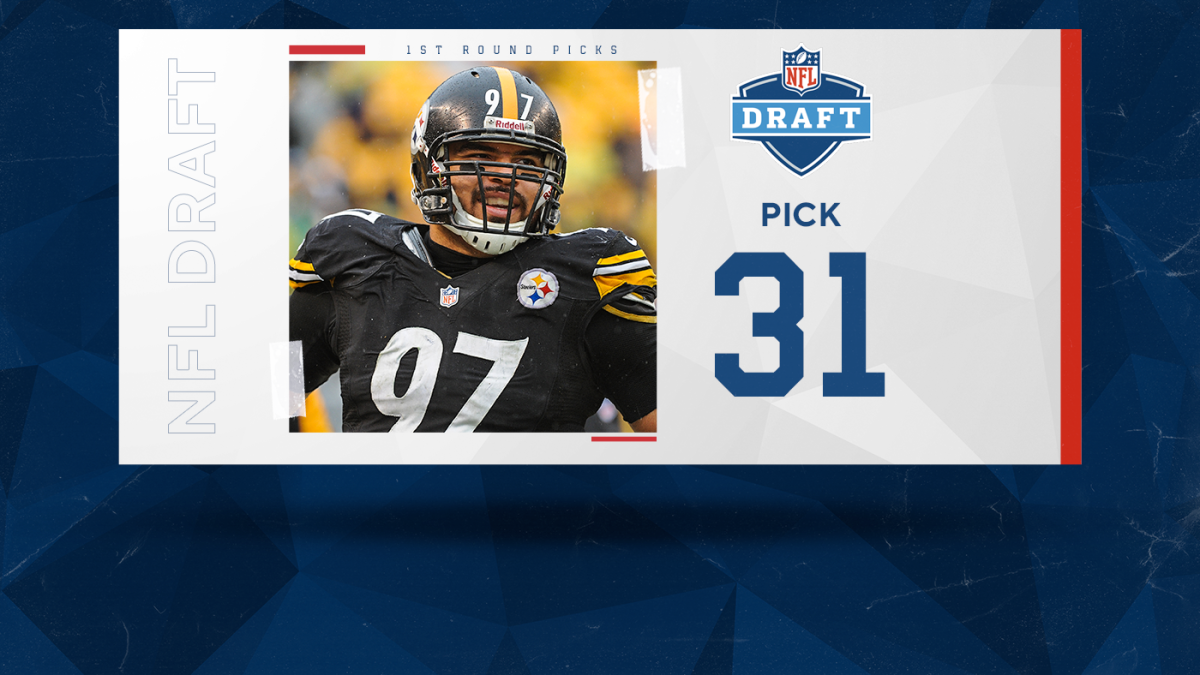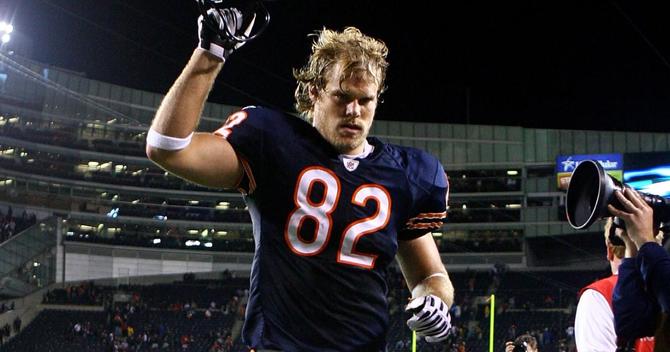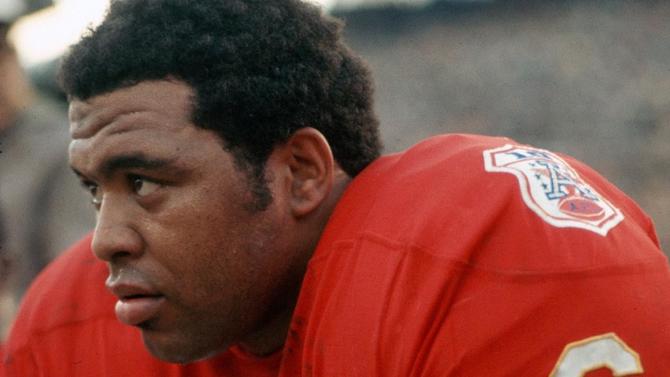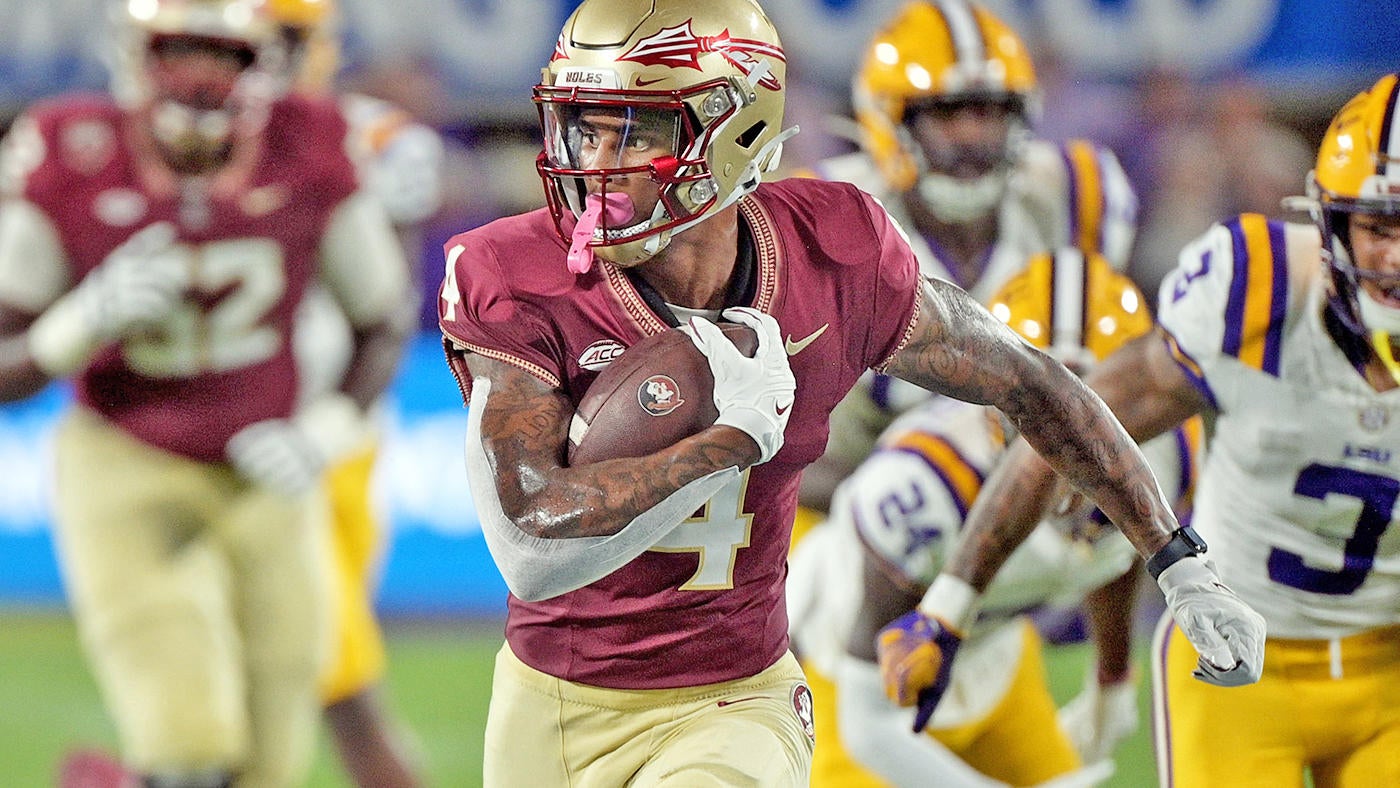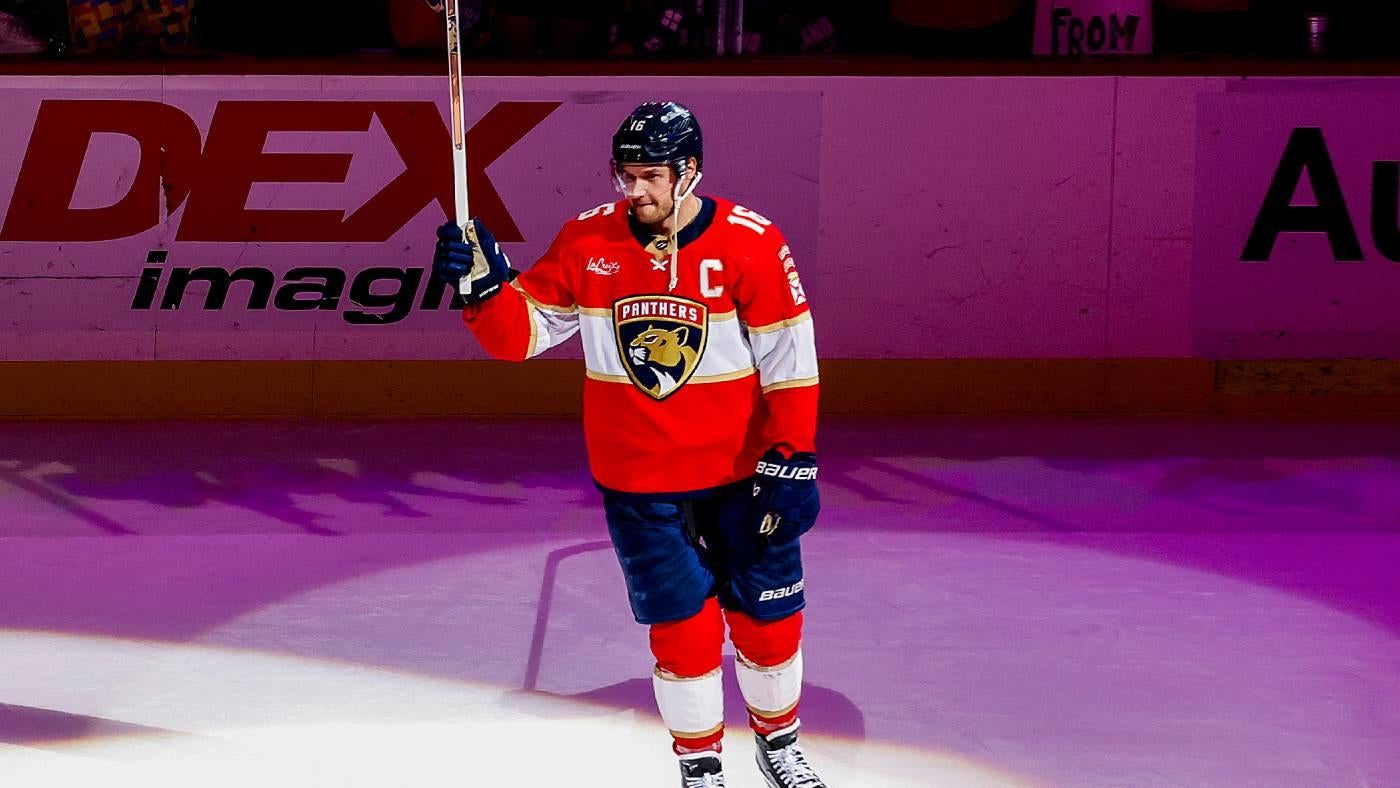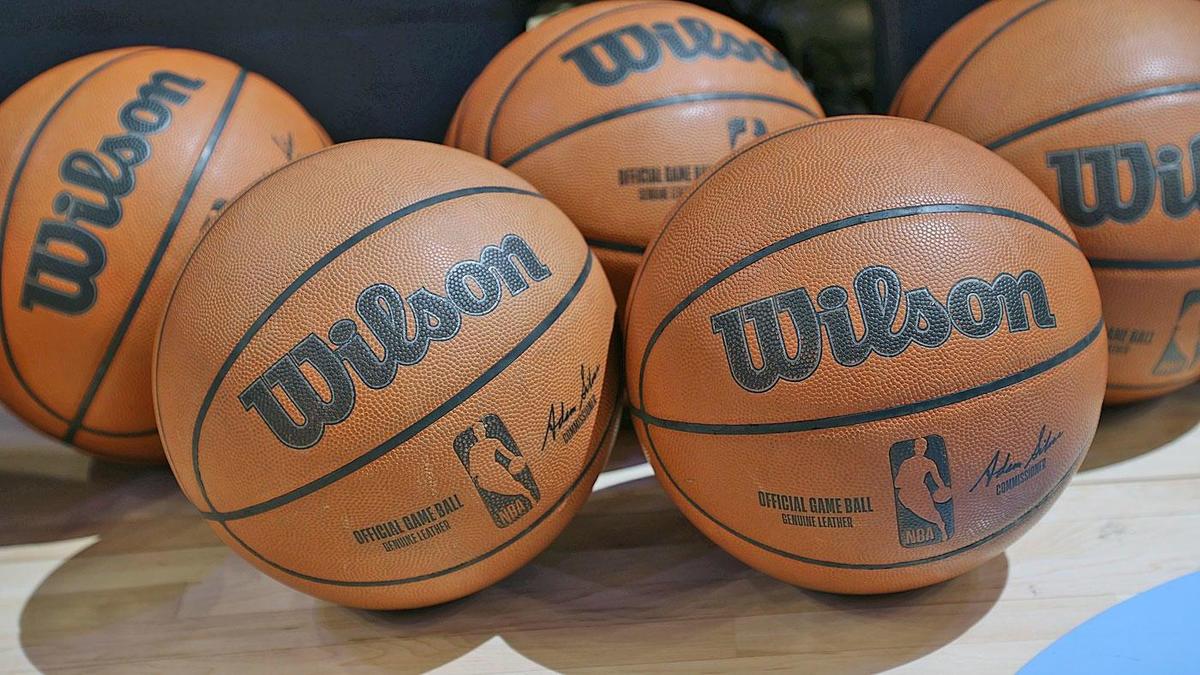Ranking the best NFL Draft picks of all time: Cameron Heyward headlines top five taken at No. 31
Written by ABC Audio ALL RIGHTS RESERVED on March 31, 2022
We’re closing in on the 2022 NFL Draft and with it comes the injection of immense talent and youth to the league. While this upcoming draft may not have the clear-cut quarterback prospects at the top like we’ve seen in the past with Joe Burrow and Trevor Lawrence, the 2022 class is widely billed as an extremely deep group. Naturally, that creates quite a bit of value as you go down the board.
Starting with the No. 32 overall selection, we here at CBS Sports have taken on the task of finding the best of the best who were ever selected in what is now known as the first round (first 32 picks). We’ll be covering each spot in the first round all the way until we reach No. 1 overall just before the draft, which officially kicks off on Thursday, April 28. To follow along on who makes each top five, check out our hub of all the action here.
As for the No. 31 pick, it is a bit more complex than other selections that we’ll dissect as we go forward. Because there were not 31 teams in the NFL at certain periods, some of these selections that you’ll read about below weren’t even first rounders, but would have been had they entered the league today. How we determined who actually made the cut was a combination of their impact to the league, longevity, accolades, and — more simply — a gut feel of whether or not they are worthy of entering this exclusive class.
This year, the Cincinnati Bengals are slated to pick No. 31 overall after their improbable run to Super Bowl LVI. Our CBS Sports draft analysts have pegged the likes of Michigan safety Daxton Hill, Washington cornerback Trent McDuffie, Clemson cornerback Andrew Booth Jr. and Michigan edge rusher David Ojabo as some of the potential candidates who could be taken at that spot in their most recent mock drafts. Could one of those players one day make it onto this list? Of course! In the meantime, let’s see who are the top five No. 31 picks of all time.
5. Greg Olsen, tight end
2007 NFL Draft: Round 1, No. 31 overall (Miami)
Team(s): Chicago Bears (2007-2010), Carolina Panthers (2011-2019), Seattle Seahawks (2020)
Olsen entered the NFL as the latest link in a chain of extremely productive tight ends out of the University of Miami. (Note: This writer was a classmate of Olsen’s during his time there.) Bubba Franks, Jeremy Shockey and Kellen Winslow II came before him, each of them selected in the first round of the draft. (Jimmy Graham followed soon after, but went later in the draft due to his lack of football experience.) Olsen’s collegiate career looked a whole lot like that of each of his tight end predecessors at The U, and because it did, the Bears deigned to make him the second-to-last pick of the first round in 2007.
The Bears, though, largely failed to tap into Olsen’s full potential as an offensive weapon. In four seasons with Chicago, Olsen averaged 50 catches for 511 yards and five touchdowns. His best year there saw him post a 60-612-8 receiving line. At the end of his fourth season, rather than offer him a long-term contract, the Bears shipped him to Carolina in exchange for just a third-round pick.
It was with the Panthers that Olsen’s career took off, as he became one of the best and most consistent pass-catching tight ends in the league. He made three consecutive Pro Bowls from 2014 to 2016 and was named a second-team All-Pro in the latter two of those years — the peak of a five-season span during which he averaged 77 catches for 969 yards and five scores a year. He was Cam Newton’s top target during Newton’s MVP season in 2015, and caught 16 passes for 231 yards and a touchdown during the team’s ultimately-just-short-of-a-Super-Bowl run.
Once Olsen hit his mid-30s, his career began to taper off. Injuries in back-to-back seasons sapped him of the explosiveness that made him a dangerous weapon up the seam, and the declining play of Newton rendered him a more inefficient intermediate target than he had been in the past. He finally put together a productive season (52 catches, 597 yards, two touchdowns) in 2019 at age 34, but by that time, it was Newton whose season was ruined by injury. The Panthers made him a salary-cap casualty in early in 2020, and he signed with the Seattle Seahawks. His one season alongside Russell Wilson was not very successful as he again struggled with injuries and played more of a complementary role when he was on the field.
Olsen retired earlier this offseason to begin a career in broadcasting. He finished his career with 742 catches for 8,683 yards and 60 scores, figures that rank eighth, sixth and and ninth all time among players at his position.
4. Travis Frederick, center
2013 NFL Draft: Round 1, No. 31 overall (Wisconsin)
Team(s): Dallas Cowboys (2013-2019)
Frederick actually received quite a bit of scorn at the beginning of his career — albeit through no fault of his own. The Cowboys originally owned the No. 18 pick in the 2013 NFL Draft, and both fans and analysts alike were expecting that they’d take one of several quality defenders still on the board: safety Eric Reid, cornerbacks Desmond Trufant and Xavier Rhodes, or especially, defensive tackle Sharrif Floyd.
Instead, Dallas traded down to No. 31 … but received only the No. 74 pick in return for doing so. It was a loss on just about every draft value chart — and less of a return than division rival Washington received when it traded down from No. 22 to No. 30 a few selections later. When the Cowboys then used the pick on a center who was widely regarded as a probable second- or third-round selection at best, the reaction was nearly apoplectic. Frederick himself was even surprised that he went in the first round.
All Frederick did then was perform like arguably the best center in the NFL in each of his first five seasons, making four consecutive Pro Bowls and three All-Pro teams (one first, two second). He was the lynchpin of what eventually became the best offensive line in football, as the Cowboys flanked him with Tyron Smith, and Zack Martin, plus Ronald Leary, La’el Collins, and Doug Free, who rotated through the left guard and right tackle spots. They cleared the way for spectacular seasons from Demarco Murray and Ezekiel Elliott, Tony Romo and Dak Prescott.
At the tail end of 2018 training camp, however, Frederick was diagnosed with Guillain-Barre syndrome. Guillain-Barre is an autoimmune disorder in which the body’s immune system mistakenly attacks the nerves, resulting in rapid-onset muscle weakness. The recovery time period varies wildly, but luckily the Cowboys and Frederick found it early, and he was able to recover throughout the 2018 season. He returned to the field in 2019 and was still a solid center, but no longer one of the top players at his position. Unwilling to continue playing if he couldn’t live up to his own lofty standards, Frederick retired at the end of the year, at just 29 years old.
He was, for all intents and purposes, something like halfway through a surefire Hall of Fame career during which he played 100% of his team’s offensive snaps before an illness took his peak years away from him — and us.
3. Tommy McDonald, flanker
1957 NFL Draft: Round 3, No. 31 (Oklahoma)
Team(s): Philadelphia Eagles (1957-1963), Dallas Cowboys (1964), Los Angeles Rams (1965-1966), Atlanta Falcons (1967), Cleveland Browns (1968)
Standing just 5-foot-9 and weighing only 178 pounds, McDonald would have been out of place as a wide receiver during quite a few eras of football. Thankfully for the Eagles, the 1960s was not one of those eras. He worked as the No. 1 target for Norm Van Brocklin and then Sonny Jurgensen, helping each of them reach an All-Pro level and aiding Van Brocklin in the team’s pursuit of the NFL Championship during the 1960 season. He caught three passes for 90 yards and a touchdown during the title game, helping lead the Eagles to a 17-13 victory over the Green Bay Packers.
McDonald’s catch-per-season numbers may not jump off the screen compared to modern receivers, but what his era lacked in volume, he made up for himself in explosion. One of just 15 players with 400 or more career receptions at the time he retired, McDonald also ranked second among that same group in yards per reception, gaining 17 yards per catch. He topped 1,000 receiving yards in three different seasons (including leading the league with 1,144 in 1961), making him one of only nine players to do that prior to the AFL-NFL merger.
McDonald was also a prolific touchdown scorer. He led the league in receiving touchdowns twice, in 1958 and 1961. He scored at least eight teams in six consecutive seasons, and at least 10 times in four in a row. His seven seasons of eight receiving touchdowns or more tied him with Don Hutson and Don Maynard for the most in NFL history at the time of his retirement.
Why it took 30 years for a player with his resume — which includes six Pro Bowl selections and four All-Pro berths, in addition to the championship and statistical accolades — to be elected to the Pro Football Hall of Fame seems somewhat beyond me, but McDonald did deservingly join those ranks in 1998. McDonald passed away in 2018, having lived just long enough to see the Eagles win a Super Bowl for the first time in franchise history, and a championship for the first time since he helped them do it all the way back in 1960.
2. Curley Culp, defensive tackle
1968 NFL Draft: Round 2, No. 31 (Arizona State)
Team(s): Kansas City Chiefs (1968-1974), Houston Oilers (1974-1980), Detroit Lions (1980-1981)
Culp would be undersized for a modern defensive tackle, let alone one who played on the nose, as he did during the latter portion of his career. But he worked just fine for the 1970s, and his unique skill set actually led his former coach, Hank Stram, to play him at that spot during Super Bowl IV — a move that ultimately helped the Chiefs neutralize the Minnesota Vikings‘ run game on the way to their first (and until 2019, only) Super Bowl victory.
As Culp’s former teammate and former Chiefs secondary coach Emmitt Thomas said of that game, “[Mick] Tingelhoff was one of the best centers in the league at the particular time; Hank put Curley over his head and it was history.”
Culp’s prowess up the middle formed the backbone of the team’s defense, so much so that his former teammate, Hall of Fame quarterback Len Dawson, told the team’s official website in 2013, “He had such strength and quickness. I remember Jack Rudnay used to say that every center in the league should have to go against Curley, in order to know what it’s like to go against the very best.”
Sacks and tackles were not kept as official stats during Culp’s career and so it’s tough to adequately describe all of his accomplishments, but he was respected enough to be selected to six Pro Bowls and six All-Pro teams. (He had an unofficial total of 68 sacks in his career, a very high total for an interior defensive lineman.) He helped the Chiefs to that Super Bowl victory, and continued playing at a high level even after being traded to the Houston Oilers in 1974. Coach Bum Phillips credited Culp with making his entire 3-4 defense work, noting that Culp was so strong that he necessitated two or even three players to block him up the middle. He was named the Defensive Player of the Year by the Newspaper Enterprise Association following his first full season in Houston, unofficially notching 11.5 sacks from his spot in the middle of Phillips’ stout defensive line.
Like McDonald, Culp had to wait quite some time for his Hall of Fame induction, but he was finally enshrined in 2013.
1. Cameron Heyward, defensive lineman
2001 NFL Draft: Round 1, No. 31 (Ohio State)
Team(s): Pittsburgh Steelers (2011-Present)
It takes a lot to stand out among the many great defensive linemen in Steelers history, but Heyward has done his part. In 10 NFL seasons, Heyward has notched 58 sacks and 86 tackles for loss, along with 138 quarterback hits. He’s been named a Pro Bowler four times and an All-Pro thrice, including two times to the first team.
Heyward began his career as a rotational contributor along Pittsburgh’s defensive front, but he’s been a full-time starter for the last eight years, and has been the anchor of the Steelers defense for every one of them. His combination of size (6-foot-5, 295 pounds), strength, length, and quickness has made him a terror for opposing offensive linemen to deal with, and has allowed the Steelers to shift him all over their defensive front. He’s lined up on the edge, as a tackle, on the nose, and even as a sort-of linebacker in amoeba-esque fronts.
He’s ranked inside the top 10 in Pro Football Focus’ grading of interior defensive linemen three times in the past four seasons, including second behind only the great Aaron Donald in 2019. Equally proficient against both the pass and the run, he is still near the top of his game, with no real drop-off in sight. (He also notched his first career interception this past season, so perhaps we have more of those to look forward to.) Signed with Pittsburgh through the 2024 season, Heyward should have several more productive years in his future. Already named the best No. 31 pick in our project last summer, Heyward should have every opportunity to solidify that standing in the future.
The post Ranking the best NFL Draft picks of all time: Cameron Heyward headlines top five taken at No. 31 first appeared on CBS Sports.

